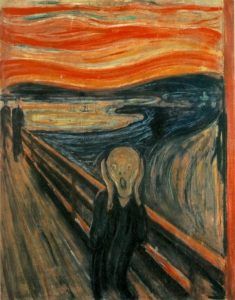Big Data Doesn’t Need Scientists, It Needs Artists
2.5 quintillion Bytes of data is created every day which would fill 10 million Blu-ray discs. These discs when stacked on one another, would measure the height of 4 Eiffel Towers, per Ben Walker of Voucher Cloud. Companies are scrambling to store all this data and data scientists are now one of the most sought after careers as we try to make sense of all of this data. The potential for big data to solve company, country, and global problems seems infinite. Yet many companies have yet to make sense of the data they are gathering. While Data Scientists are key to structuring and analyzing the data, I argue that we will need Data Artists to make the data accessible to the c-suite and beyond for us to take big data beyond the numbers.
Artists have been tackling complex issues and making them easily understandable for thousands of years. For example, more of us have been exposed to existential angst via Edvard Munch’s, The Scream vs. Soren Kierkegaard’s seminal existential work, Fear and Trembling. This is a perfect example of an artist taking a complex idea, with lots of supporting data and distilling it down to an image that not only encapsulates the idea but presents it in an easily digestible manner for the masses. This, I argue, is what we need to take big data to the next level.
Data Visualization
Data Visualization has begun to fill the need for artists in a big data world. There some incredible examples of data visualization from north American flight patterns to Google searches by U.S. states. These visualizations give us glimpses into what is possible with big data but the utility and application of this data is missing. The best works of art have a meaning behind them, a message that the artist wants to convey to its viewers.
Data Conceptualization
To get big data to really work for us, we need to move beyond data visualization and into data conceptualization; turning data into an actionable concept for companies. The difference between data visualization and data conceptualization may seem subtle but represents a shift in the way we think of data. Data visualization allows us to visualize data in ab optically pleasing way, data conceptualization involves visualization but allows us to digest data in a meaningful way.
The marriage of visualization and conceptualization has been perfected by artists. Understanding the underpinnings of societal issues and conceptualizing a vision through visual art is what artists have been doing for centuries. Data Artists could in turn understand a company’s complex issues through data and create visualization platforms that conceptualize those issues in a meaningful way.
Data Artist may be a tough sell in terms of a title as the perception of artists in the business world isn’t one linked to revenues, so we may have to come up with a new title; Data Conceptualizers? Whatever the title, the need for Data Artists in a Big Data world is clear.
This blog post was originally published on HispanicAd.com
